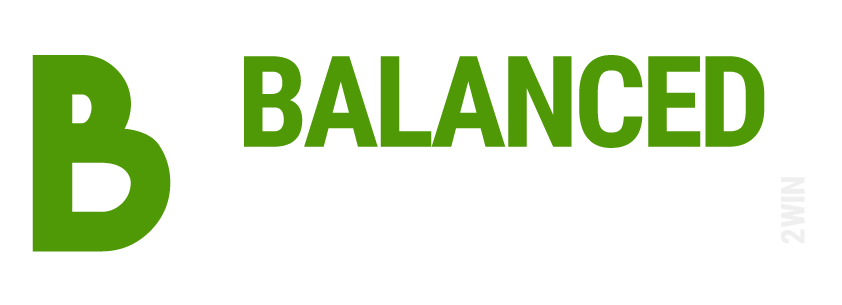
Driving Focus & Alignment with the Balanced Scorecard
Why Organizations need a Balanced Scorecard
Over 150 years ago William Thompson presciently noted:
“When you can measure what you are speaking about, and express it in numbers, you know something about it; but when you cannot measure it, when you cannot express it in numbers, your knowledge is of a meager and unsatisfactory kind.”
A subject that has been with us as long as time has been recorded (perhaps the first measurement?), the idea of tracking results touches virtually every facet of our lives today. Whether it’s counting the calories we vowed to curtail as we savored our last sip of champagne on New Year’s Eve or tracking the miles per gallon on our new car, we simply love to tally things. Of course, measurement has been a staple in the organizational world for centuries but was refined dramatically in the 20th century thanks to innovations by early industrial pioneers such as DuPont and General Motors.
Using performance measures to gauge success is vital to any organization, whether operating in the private, public, or nonprofit sectors. Sadly, despite the importance of the topic, measurement has been under siege for a number of years with cries for change coming from both pundits and practitioners alike. Perhaps speaking for the multitudes of critics, much revered management guru Peter Drucker once went on record as suggesting that few factors are as important to the performance of an organization as measurement, and measurement is among the weakest areas of management today. Just why is measurement in such a deficient state anyway? Let’s consider three factors that may explain the problems we face when attempting to accurately monitor our success through measurement.
The Limitations of Financial Measures
Traditionally, the measurement of business has been financial, in fact bookkeeping records can literally be traced back thousands of years. But a traditional focus on something, no matter how “tried and true” it may have been in the past doesn’t mean it’s well suited for today’s environment. Such is the case with financial measures. Organizations ranging from Fortune 500 companies to local nonprofits to the federal government are beginning to question our almost exclusive reliance on these not so dependable gauges of success. The chief criticism levied at financial measures is that they’re tantamount to driving our car by the rearview mirror. You get a great view of where you’ve been, but little guidance towards where you’re headed. So, it is with financial measures. A good quarter, or year, one filled with economic success is no guarantee of future financial rewards, just ask the folks at Enron! Even so called “great” companies, those that once graced the covers of business magazines and were the envy of their peer groups can fall victim to this unfortunate scenario. Witness the vaunted Fortune 500 list; two-thirds of the companies compiling the inaugural list in 1954 had either vanished or were no longer large enough to maintain their presence on the list’s 40th anniversary.
Despite their flaws financial measures will continue to be vital yardsticks used in assessing the success of any organization. Even public and nonprofit enterprises, once thought to be immune to financial monitoring, must balance their desire to achieve mission outcomes with the reality of taxpayer and donor demands for efficiency. What we need is a performance measurement system that balances the historical accuracy and integrity of financial measures with the drivers of future financial success.
The Rise of Intangible Assets
Think about any organization with which you’re affiliated, it could be your workplace, the nonprofit you volunteer with, or even your own family. Now, consider specifically what drives the success of that organization. Is it the physical equipment you possess, such as buildings and machinery? What about your p.c.? Probably not. If yours is like the vast majority of modern organizations, what’s driving your success is not tangible assets, but their far more valuable and sustainable cousins, intangible assets. Isolating our discussion to the world of business, it’s things like employee knowledge, databases full of rich information, and cultures of innovation and change that really drive value. Some recent estimates peg the value of intangibles as high as 75% of an organization’s true worth. Our traditional financial measures have a very difficult time tracking these new intangible assets – how do you put a price on a motivated, skilled employee operating in an environment that encourages growth and change? As we move into the 21st century it’s clear that today’s performance yardsticks were designed for yesterday’s challenges. We need a new performance measurement system, one that sheds light on the value of intangibles and allows us to predict and drive future economic success.
The Challenge of Executing Strategy
During my career I’ve had the opportunity to sit in on a number of strategy setting workshops and have always relished the spirited debates, the ‘aha’ moments of breathtaking clarity, and of course the ever-present jugs of coffee and trays of gourmet cookies. The freshly minted strategy emerging from these often-grueling sessions is a justifiably pride-invoking achievement, however, it’s a far cry from producing this document to actually living and breathing it day in and day out. But to succeed in any business today that is precisely what we must do – bring the strategy to life with the unmistakable clarity necessary for everyone in the organization to act on it each and every day.
- Let’s face it – we have to execute not only to thrive but to simply stay alive in a business world in which 84 percent of respondents in one recent poll said that competition in their industry had significantly increased in the last five years.
- And leaders, you know how vital it is to execute your strategy quickly; an oft quoted Fortune magazine study from 1999 found that seventy percent of CEO failures came not as a result of poor strategy, but the inability to execute.
- Need one last shred of evidence to get your blood pumping (or maybe boiling), a team of researchers recently discovered that companies, on average, deliver only 63 percent of the financial performance their strategies promise.
- The good news is that strategy implementation has been proven to boost financial fortunes rather significantly – one study suggested a thirty-five percent improvement in the quality of strategy implementation for the average firm was associated with a thirty percent improvement in shareholder value.
- Unfortunately, many organizations fall off the strategy execution track, frequently in dramatic fashion simply because their measurement systems focus almost entirely on financial targets, ignoring the enablers of strategy implementation.
Given what we’ve covered thus far is it any wonder the measurement nay-sayers are striking such a plangent chord with organizational audiences around the globe? The challenges are profound and significant – the limitations of traditional financial metrics, the demands of a society of knowledge workers, and the absolute imperative of executing strategy. Fortunately, a tool has emerged which has proven capable of overcoming those and a host of other challenges along its path to the pantheon of business systems. That tool is the Balanced Scorecard, and in the remainder of this article we’ll examine the fundamental principles of this revolutionary management system, and I’ll introduce you to an organization that has reaped tremendous rewards from its Balanced Scorecard investment.
The Balanced Scorecard
The Balanced Scorecard was developed in 1990 by two men: Robert Kaplan and David Norton. Interestingly, Kaplan is an accounting professor at Harvard University. Given his profession you might suspect that he had a vested interest in safeguarding the vaunted position of financial numbers. But Kaplan was a visionary; he realized that financial numbers alone would not be enough for organizations attempting to thrive, or even compete, in the 21st century. To that end, he and Norton organized a research study of a dozen companies, attempting to discern “best practices” in performance measurement. Out of that study the Balanced Scorecard was born.
The basic premise behind the Balanced Scorecard is a simple, yet profound, one. Financial measures are, and always will be important, but they must be supplemented with other indicators which predict future financial success. With that as their goal, Kaplan and Norton developed the Balanced Scorecard framework.
At the center of the framework are the words “vision” and “strategy.” Unlike traditional performance measurement systems which have financial controls at their core, the Balanced Scorecard begins with an organization’s vision and strategy. We seek to translate the vision and strategy into performance measures which can be tracked and used to gauge our success in the successful implementation of vision and strategy.
For profit driven enterprises, the Financial perspective is placed at the top of the Scorecard model. The measures chosen here to represent “the end in mind” of their strategic story and normally focus on profits, revenue growth, productivity, and asset utilization. With financial measures determined, the Scorecard poses an important question: how do we derive this profit or growth? Well, from customers of course. Thus, we shift our focus to the Customer perspective. Here we measure our performance from the eyes of our customer. What do they expect or demand from us – timely service, quality, a deeper relationship, accuracy, price, accessibility? By answering these questions, we can derive measures that allow us to track our success from their perspective. Next, we turn our gaze inward and examine our Internal Business processes. To meet customer demands there are core business processes at which we must excel. Every organization will have dozens if not hundreds of processes (manufacturing, order entry, branding, reporting, etc., etc.) but in this perspective we’re attempting to measure our performance on those that directly impact performance for our customers.
If for example, we determine that our customers demand a low price, we could measure price relative to our competitors in the customer perspective. Internally, we must excel at low cost manufacturing in order to offer low prices, and therefore we measure our manufacturing cycle time in that perspective. Finally, the Scorecard forces us to grapple with the true value-creating mechanisms of modern organizations, intangible assets. We do so in the Learning and Growth perspective. Here we focus on measuring three things: human capital (employee skills, training, etc.), information capital (access to information for example), and organizational capital – the ability to change and sustain success (culture, teamwork, etc.). Sometimes considered “soft stuff,” these measures are truly the enablers of everything else appearing on an organization’s Balanced Scorecard.
The Balanced Scorecard gets results
I first met Bob Whip, CEO of Horizon Fitness, on a blustery December night in Madison Wisconsin. The company had engaged me to assist them in the development of a Balanced Scorecard and Bob was kind enough to meet me on that chilly winter’s night. As we drove to the hotel Bob gave me the Horizon story: a new company in 2000 they amassed $6.6 million of revenue in that first year but Bob had a grand strategy for the manufacturer and distributor of fitness equipment, one that would see sales grow dramatically over the next few years. The strategy he laid out was sound, but the problem as we both knew was execution.
Using the Balanced Scorecard as their template for success, Bob and a team of senior managers at Horizon translated their strategy into a set of measures in each of the four Scorecard perspectives and soon began using the results to drive the agenda of monthly and quarterly management review sessions. Additionally, they transformed the Balanced Scorecard from a mere measurement tool to a powerful strategic management and communication device by linking resource allocation decisions to Scorecard measures and communicating Scorecard objectives and measures to all employees in an effort to ensure they could define their unique contribution to the growing company’s success. On the resource allocation link Bob notes,
“It definitely makes budgeting easier. For example, if the proposed expenditures are not in alignment with our strategy then the expense is rejected. This has given us a great deal of focus in settling our annual budgets as it tests our expenditures and takes a lot of the guess work and emotion out of budget decision making. It also makes it easier to justify expenditures to our board of directors.”
Horizon Fitness, in just their third year of Balanced Scorecard use, have seen transformative results from their investment in strategy execution. The Scorecard has become a powerful tool for training and orienting new employees to the company’s strategy, has introduced a new level of accountability to the management ranks, is relied upon to communicate strategy to all stakeholders, and most importantly the focus it fosters has helped the company reach over $85 million of sales in its most recent fiscal year. Given those impressive results it’s not surprising that Bob would say,
“We like the flexibility of the BSC system of management and would strongly recommend it to any company.”
Like Horizon Fitness, thousands of organizations around the globe have harnessed the simple, but not simplistic, principles embodied in the Balanced Scorecard model to achieve tremendous results. From an unrelenting focus on strategy, to employee alignment around a few key goals, to breakthrough financial results, these organizations have used the Balanced Scorecard as a powerful measurement and management system, one truly suited for the modern world we face.

